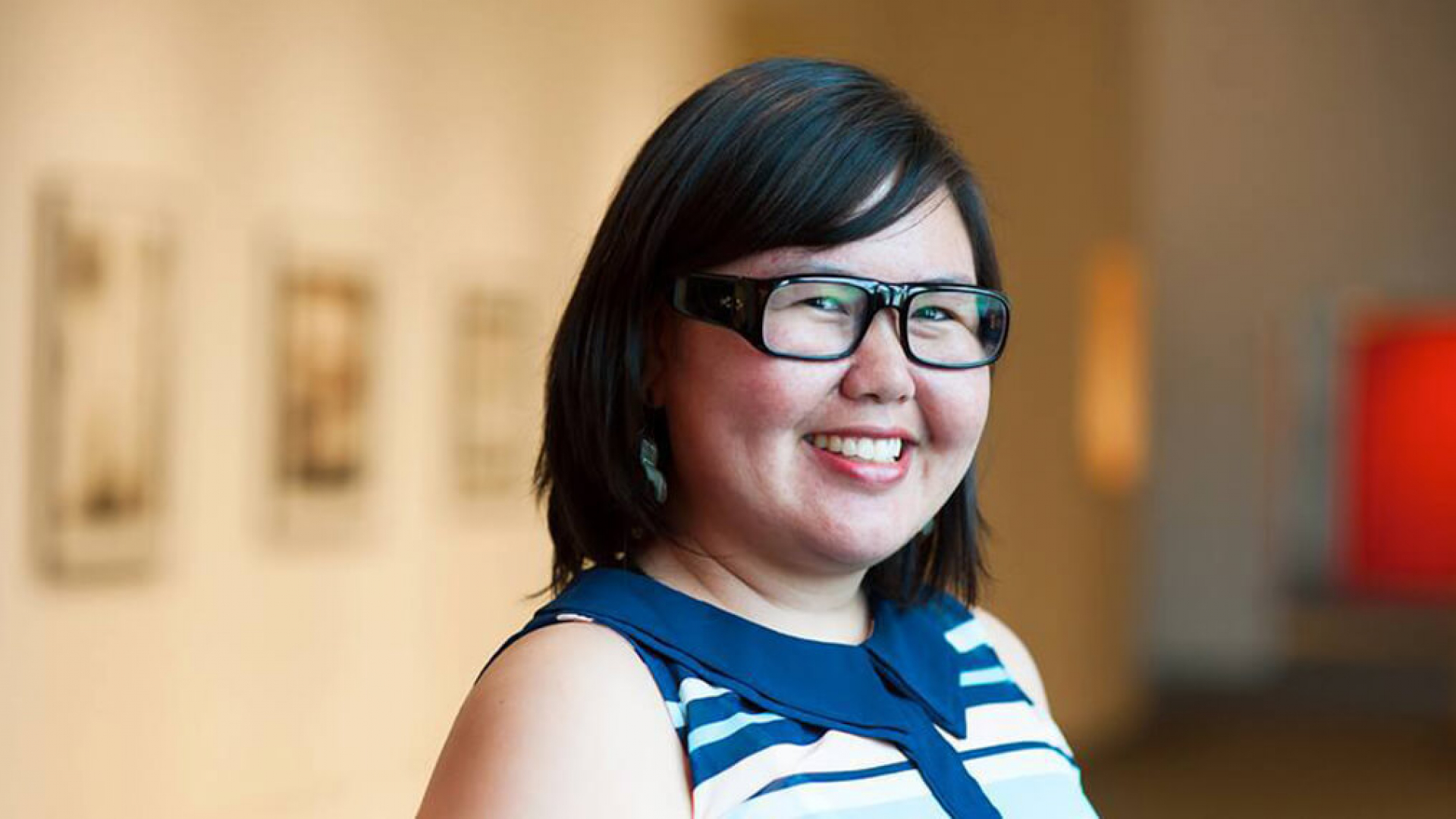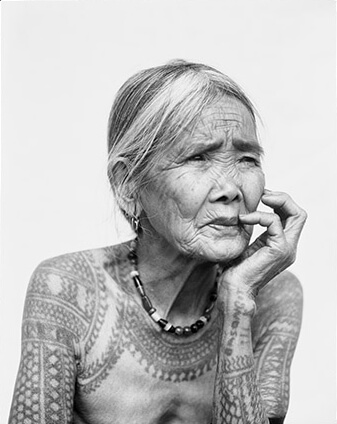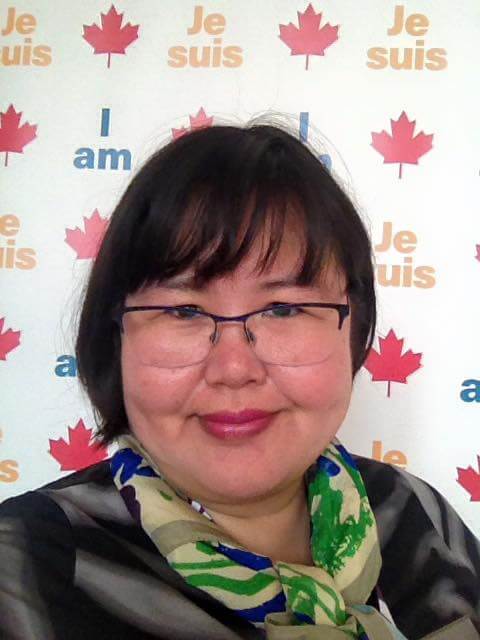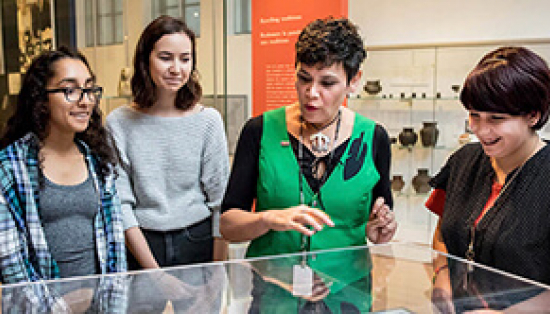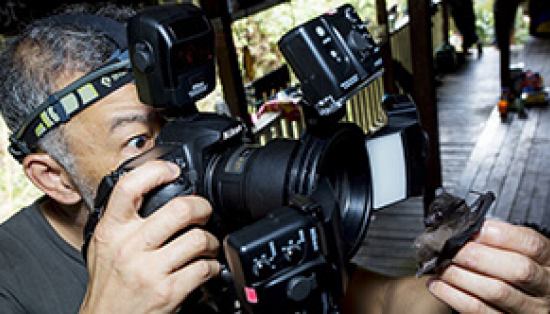Every Thursday at 10 am on Instagram we chat with a different ROM expert ready to answer your burning questions on a different subject. This week we’re talking to Jaclyn Qua-Hiansen, the Senior Coordinator, Inclusion, Diversity, Equity, Accessibility (IDEA) at the Royal Ontario Museum. She oversees the ROM Community Access Network (ROMCAN), a program that works closely with 100 community partners across Ontario to break down financial, social and cultural barriers to access for diverse communities. Jaclyn also coordinates various aspects of the ROM's accessibility and inclusion portfolio, including exhibitions, tours and programs.
Q. What is your ideal vision of museum accessibility?
A. My ideal is for everyone to feel at home at the museum. We address some barriers to access (free admission, AODA-informed design), but museums as an institution have a complex, colonial history that makes some communities feel excluded or unwelcome.
I would love a museum that is a gathering space for communities. One that everyone—across identities, abilities, cultures, ethnicities, education levels, feels is a space where we can all be fully ourselves, and share our stories and lived experiences.
I am grateful for our 100+ community partners. Their insights help inform our work in moving towards this vision.
Q. How have lockdown restrictions changed your approach to accessibility?
A. Interactivity, particularly touchables, is one of my favourite go-to strategies for accessibility, because it makes our galleries engaging for blind visitors + multiple learning styles. With COVID-19 precautions, there is now a risk with high-touch surfaces.
I also work a lot with community partners to facilitate in-gallery experiences and community group visits. We also provide partners with social prescriptions for community members to visit the museum for free with up to 3 guests. Under lockdown, the museum is closed, so all of that is put on hold.
We have adapted by increasing focus on our digital content. We have descriptive audio tours for exhibitions, so you can get a taste of highlights from home: www.rom.on.ca/audio. We also partnered with Inkwell Workshops to create ROM Writes, self-guided creative writing modules inspired by ROM objects.
I am now working with Youth Rising Above to co-create a virtual version of our DiscoverU program, a skills development workshop series for marginalized youth:
Q. What excited you the most about accessibility at the ROM?
A. I love how broadly we define access at the ROM. Conversations around accessibility often focus on removing physical barriers to access. While that’s very important, we recognize there are also financial, social, and cultural barriers to accessing museums.
My job involves supporting the ROM is examining the experiences we offer with as many different lenses as possible, to see where and how the experience may exclude some of our visitors. I rely a lot on our community partners for this, as they work much more closely with vulnerable communities daily. I often tell our partners, “We know dinosaurs; you know the communities you serve. Tell me what your community members need from us, and I’ll do what I can to make it happen.”
Q. What would be your biggest challenge for inclusion?
A. Free admission, co-created programming, and interactive experiences only go so far. There are broader, and more serious, systemic barriers that continue to exclude some communities from fully joining the museum world, whether as a visitor, volunteer, staff member, or leader. And these systems go beyond the ROM, and even beyond museums.
Sometimes, my job feels like taking a lot of baby steps that still fall far short of solving broader systemic problems like poverty, racism, ableism, limited access to education, etc. As a museum, we cannot solve all of those problems, but we also have to acknowledge that we do have a part to play in addressing them.
I am lucky in that I get to help influence the ROM’s work in this regard. I am leading a project team to apply the Of By For All framework to our community engagement strategies for Black youth in the GTA. I am working with my manager to find ways to make our job opportunities more inclusive for our ROMCAN Communities.
But I am aware of how much further we, and museums more broadly, can still go in addressing systemic barriers.
Q. What is your favourite exhibition of recent years at the ROM?
A. Tattoos! I am a Filipina immigrant, so it was incredible seeing Whang-Od on the feature image of all of our promotional materials. She is the oldest Kalinga (an indigenous group) tattoo artist in the Philippines. And her photo was by Jake Verzosa, a Filipino photographer who lives in the Philippines. We even had more of Jake’s photos of tattooed Kalinga women on the grass by our Queens Park entrance!
I often hope, but rarely expect, to see my culture and my heritage represented in Canadian museums. So, seeing Whang-Od’s photo so prominent at the ROM and around Toronto, AND seeing a Filipino artist be so recognized was very emotional for me. I teared up seeing the images, and I still have one of the promo postcards pinned to the wall of my work cubicle.
Q. What do you love best about your role at the ROM?
A. I love working with our community partners, and I love meeting with our visitors and community program participants!
We did in-person versions of DiscoverU with Youth Rising Above and creative writing workshops with Inkwell Workshops at the ROM last year, and I got to see first-hand how participants enjoyed exploring our galleries and learning from museum staff. More recently, I coordinated a pre-opening visit to Winnie-the-Pooh for a young girl undergoing treatment at SickKids, and it was wonderful seeing her and her family having so much fun at the exhibit.
A personal fav for me is hosting citizenship ceremonies with the Institute for Canadian Citizenship. I helped coordinate one a couple of years after I became a Canadian citizen, and it felt like my life had just come full circle. I know how meaningful becoming a citizen was for me, and I loved being a part of making that experience happen for other immigrants.
Q. What did you study in university?
A. I have a BA in Management Economics from the Ateneo de Manila University in the Philippines, and an HBA in English from U of T.
I started at the ROM as an Audience Coordinator, helping the Visitor Experience team track visitor feedback to identify patterns for improvement, then eventually transitioned into my current role.
My work in visitor experience very much informs my community-centric perspective and my active listening approach to community feedback. My English degree helps me adapt my approaches to communicating with a diverse range of audiences, and my business degree helps me in coordinating projects with tight budgets and timelines, and multiple competing priorities.
I learn a lot about accessibility and community engagement best practices on the job. More importantly, I find that my expertise is often less in what I know myself, and more in that I know whom to approach to get the information and perspectives I need.
Q. I have not thought of a question yet, but I wanted to thank you for your important work!
A. Thank you so much! I am lucky to be working with so many incredible community partners and museum colleagues. I could not do this work without them, nor without the visitors and community members who take the time and the emotional labour of telling us how we can keep doing better.
If you have any ideas, you would like to share with us, of how the ROM can become a more equitable and inclusive institution, please complete the form at the bottom of this page. My manager monitors the responses to that form, and ensures these insights are brought to the attention of ROM leadership.
Q. Is it hard to make exhibits accessible in all senses of the word?
A. Yes, because there is just such a broad diversity of barriers to access, and limited time and resources to make exhibits happen. We work using universal design principles, in the sense that when we design something, we aim to engage as many audiences as possible.
For example, we try to make our exhibitions accessible with our descriptive audio tours. These tell the stories behind highlight objects, beyond what you can read on the labels, so they make the ideas and concepts within the exhibition more accessible to many audiences. These tours also include descriptions, which helps blind / partially sighted visitors understand what the highlight objects look like. And we post a PDF transcript on our website, for audiences who are Deaf, or who prefer to read than to listen to content.
But descriptive audio tours only create particular forms of accessibility. With 1M+ visitors a year, we welcome audiences with a broad spectrum of abilities, learning styles, income levels, and interests, and it is tough to remove all barriers to access.
Q. How can we make museums more welcoming to diverse communities?
A. There are some important first steps: providing opportunities for free admission, ensuring the physical space is accessible, providing multiple venues to access content (digital / in-person, group / individual), etc.
But ultimately, museums as institutions need to really address our history as a colonial space, our public image as a privileged space, and the continuing systemic barriers that exclude members of some communities. There is a common perception of museums being a space for wealthy, highly educated, white patrons, rather than a space for, about, and by diverse communities (Indigenous, Black, POC, disabled, Deaf, Mad, etc). And there are valid reasons behind that perception.
As much as I love the work I do, and as proud as I am of the steps we have taken with our community partners and within our space towards greater equity and inclusion, I recognize the enormity of the tasks still before us.
I do not think it is impossible. Libraries used to be seen as a space for academia and strict rules about behaviour, and they have done good work in transforming into more welcoming community hubs. So, there are things museums can do better in much broader, systemic ways. How? I do not know. I just continue to work with our community partners to continue to take baby steps towards doing better.
Q. What is the most rewarding aspect of your job? What part do you enjoy most?
A. I love meeting with community members and seeing how something I worked on made their day even a tiny bit better.
For example, we worked with Institute for Canadian Citizenship to deliver Arabic-language tours to Syrian refugees. Some of the kids took photos of practically every display we passed, and I realized that because they left so much of their lives behind in Syria, they were eager to capture all these new memories at the ROM.
I also helped coordinate a Make A Wish visit for a child who wanted to become a palaeontologist. One of our palaeontologists took the child and his family to see some of our fossils in storage, and the child and his family got to dig for “fossils” in our Discovery Gallery.
When kids at St. Albans Boys and Girls Club asked to see dinosaur poop (coprolite), I found a piece they could touch. (Still my favourite work-related email!)
These encounters with our community members make the day-to-day of my job worth it and remind me of why I do this work.
Q. Are there any partnership opportunities for ASL interpreters?
We have a partnership with George Brown College’s ASL interpreting program. Their students interpret Museum Highlights tours as part of their course work, and then get added to our list of interpreters after they graduate. We usually reach out to this list of graduates and to the OASLI membership directory whenever we need to hire an interpreter.
We also partner with some organizations working with the Deaf and deafblind community (Silent Voice Canada, Bob Rumball Foundation for the Deaf, The Canadian Helen Keller Centre) to bring their groups to the ROM for free. They often bring their own interpreters and intervenors for their visit.

